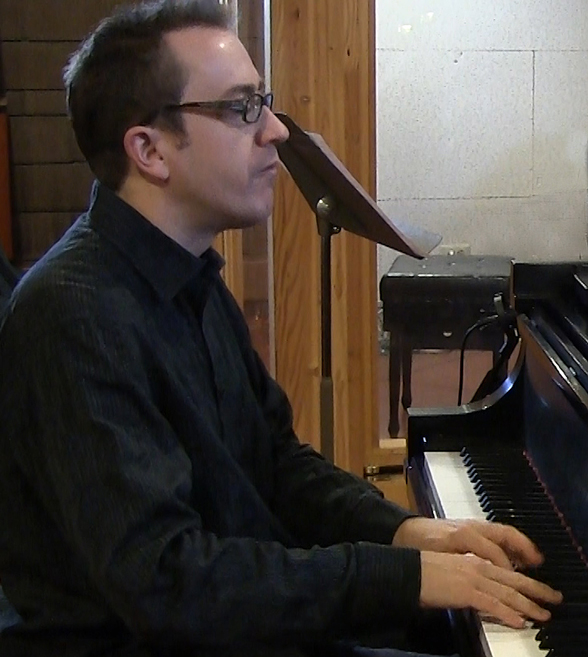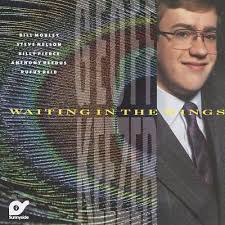A tricky piece for any instrument—but well worth the challenge. It's a medium-up Latin song set up with an angular bass vamp. After the first eight measures of this vamp, the piano comes in, alternating two chords which are opposite of the accented bass notes: Cmaj7♯5 over B and Bmaj7♯5 over C. The head is angular both melodically and rhythmically, especially in the eight-measure A section. In the seven-measure B section things settle down a little, suggesting a D minor tonality; C is like A but shortened to seven measures without the first measure of A. Then it's back to the intro vamp for eight measures to set up the solos.
Solos go to swing, using a simplified version of the head form: a 10-measure E section based on A of the head, eight-measure F related to B, and a final four-measure G section that stays on a C major chord. After the solos, the rhythm section vamps eight measures of the intro figure to set up the out head. On the recording the rhythm section fades out on the D vamp, with horns improvising together; we also show an alternate ending holding a final Cmaj7♯5/B chord.
About the arrangement: A Condensed Score is available. Though recorded with a sextet (two horns + vibes + rhythm section), there are only really two melody parts; our second parts are marked "quintet." The vibes mostly doubles the trumpet melody, as well as the top two notes of the piano voicing an octave up at the intro and D. At the beginning of the head the horns play in close contrary motion, going to octaves in the fourth measure. The tenor sax adds a countermelody at B.
For the solo piano arrangement click on Piano Corner.
A striking and virtuosic title track for an impressive debut album, recorded when Geoffrey Keezer was only 17 years old. Check out the other originals from
this album.
Earlier in 1988 vibraphonist
Steve Nelson recorded on "
The Sweetest Sounds",
Donald Brown's second album as a leader. In 1989 Nelson played on Keezer's second album "
Curveball." Both Keezer's and Brown's second albums were quartets, also featuring Charnett Moffett on bass.
A Solo Piano Arangement by Geoffrey Keezer is available. It includes essentially everything from the recorded arrangement, except some of the tenor countermelody at B; a rhythmic left-hand part is added here. The left hand catches the contrary-motion lines for example in the second measure of A. The last measure is the same as our alternate ending indicated on the lead sheet.


